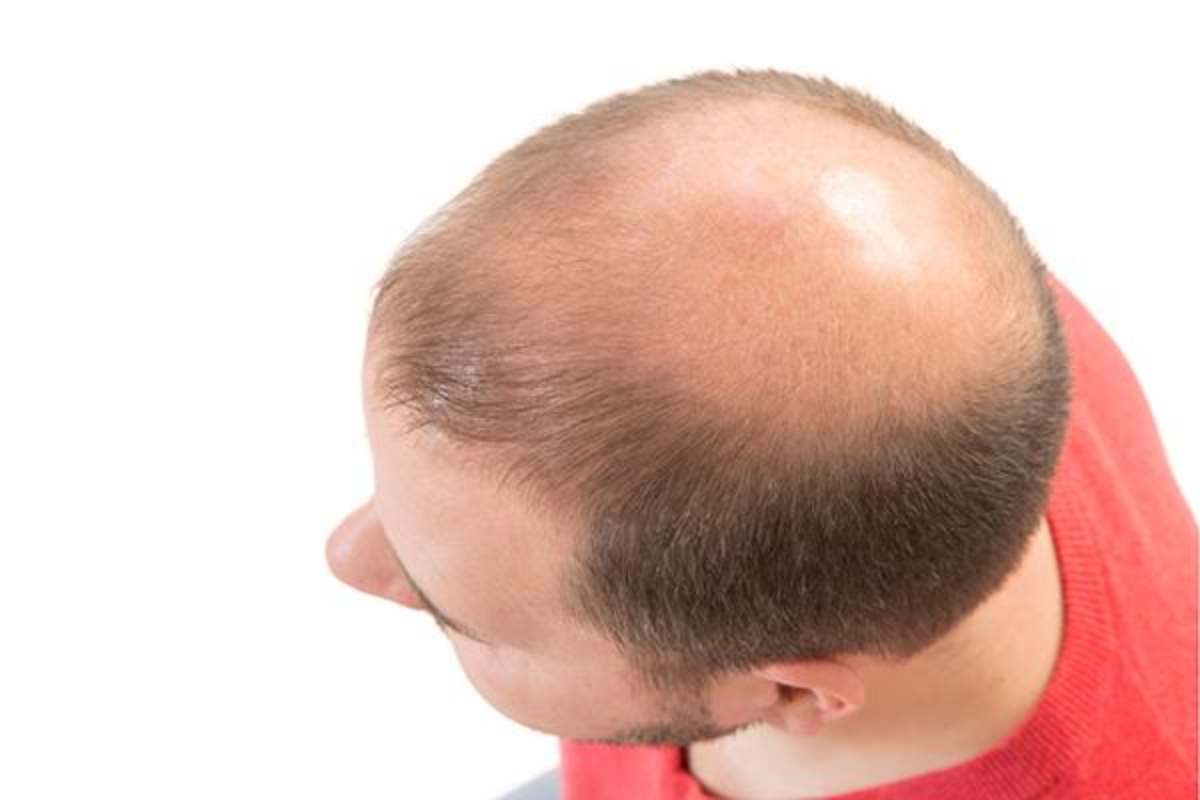Researchers have recently discovered that Xeljanz, a popular drug used to treat patients with rheumatoid arthritis, could help with hair loss in a way that’s never been seen. This revelation comes from a recent study conducted at Stanford, Yale and Columbia. Patients suffering from alopecia areata, an autoimmune disease that leads to hair loss, were prescribed Xeljanz in pill form, resulting in positive hair growth.
So what about using Xeljanz for male pattern baldness?
Xeljanz for Male Pattern Baldness & Alopecia Areata?
We live in a world with treatment for diseases and ailments that, even 50 years ago, would have seemed impossible. Considering how advanced our technology has become, it seems almost unthinkable that we still can’t easily stimulate someone’s hair to grow. Why is hair growth still so difficult? It’s complicated.
Hair is not grass. You cannot just sprinkle a solution onto your bald scalp and expect luscious locks to grow overnight. There are many reasons one might lose hair, some related to aging or genetics, and some related to other diseases, like alopecia areata. Treating the different types of hair loss is a difficult process, but Xeljanz might deliver hope for genetic and disease-related hair-loss sufferers alike.
What is Alopecia Areata?
Alopecia areata is an autoimmune disease that causes a person to lose all, or some, of the hair on their body, usually from the scalp, due to the body’s failure to recognize its own cells. When the body attacks itself, it destroys healthy tissue and in this case, the body destroys its own hair. This usually results in circular bald spots throughout the scalp and, in some cases, it can spread to the entire scalp, facial hair or even all body hair. The most severe type of alopecia areata is known as alopecia universalis.
Current treatments for alopecia areata using steroid injections and/or creams don’t provide the desired effect for patients with the more severe disease, and can leave people frustrated and depressed. Steroid injections tend to provide help to smaller patches of hair loss, while creams or solutions alone aren’t as effective due to the fact that they can’t penetrate down to the level of the hair bulb as well. Oral steroids can be used but these tend to decrease the hair loss only during the period in which they are taken. They can also lead to some serious side effects so they can’t be used for long periods.
However, while it may seem like the current treatment options won’t provide the results you desire, the new findings on Xelijanz may shine light on stimulating hair growth in patients with alopecia areata.
Xeljanz and Alopecia Areata
More than half the participants in the study conducted at Stanford, Yale and Columbia saw some hair regrowth while taking the drug, and a third recovered more than 50% of their lost hair. A separate study reported that nine of 12 patients with alopecia areata regrew more than 50% of their hair using a similar drug called Jakafi, which is used to treat cancer.
Patients who took part in the Xeljanz trial, and have experienced hair re-growth, have still shown signs of male pattern baldness. The hair that grew back due to the treatment was hair they would have had, regardless of whether or not they had the disease. In other words, a 47-year-old patient regrew the hairline he would have as a 47 year old man. Xeljanz didn’t magically turn the clock back to when he was 25.
Although the test results are promising for those people suffering from alopecia areata, do these results have implications in using Xeljanz for male pattern baldness?
Xeljanz for Male Pattern Baldness
Encouraged by the success of the studies done using Xelijanz in pill form to treat alopecia areata, Dr. Brett King at Yale is testing a Xeljanz ointment, applying it directly to the scalp in areas affected by male pattern baldness. At present, there are no existing studies to confirm that using a Xeljanz ointment will have the same effect as the Xeljanz pill; however, another doctor, Dr. Angela Christiano, has had some success with Xeljanz ointment after rubbing it onto the skin of mice. Don’t get your hopes up just yet, though; mice skin is quite different than human skin. Although these mice were bred to have skin similar to that of bald men, it’s nonetheless harder to penetrate human skin to properly deliver the drug to where it needs to go.
Male pattern baldness is a completely different problem than alopecia areata, too. The latter is a disease, whereas the former is the genetic propensity of hairs to die out in response to hormonal stimulation. It’s easier to treat a disease than to change one’s genetics or to rejuvenate a thing from death; however, these recent studies have brought new hope to millions of people out there who suffer from hair loss.
While we wait for the final results of these tests, there are centers that deal directly with male pattern baldness, such as Limmer HTC. We offer treatments that don’t involve surgery, including:
- Platelet Rich Plasma injections
- Low-level Laser Light Therapy
- Special shampoo containing zinc
- Minoxidil (Rogaine) 5%
- Finasteride (Propecia) and Dustaride (Avodart)
Take a deep breath and immerse yourself in the small, yet steadily growing, world of treatments for male pattern baldness – and new treatments continue to emerge. Contact us to learn more about hair growth treatments at Limmer HTC.







